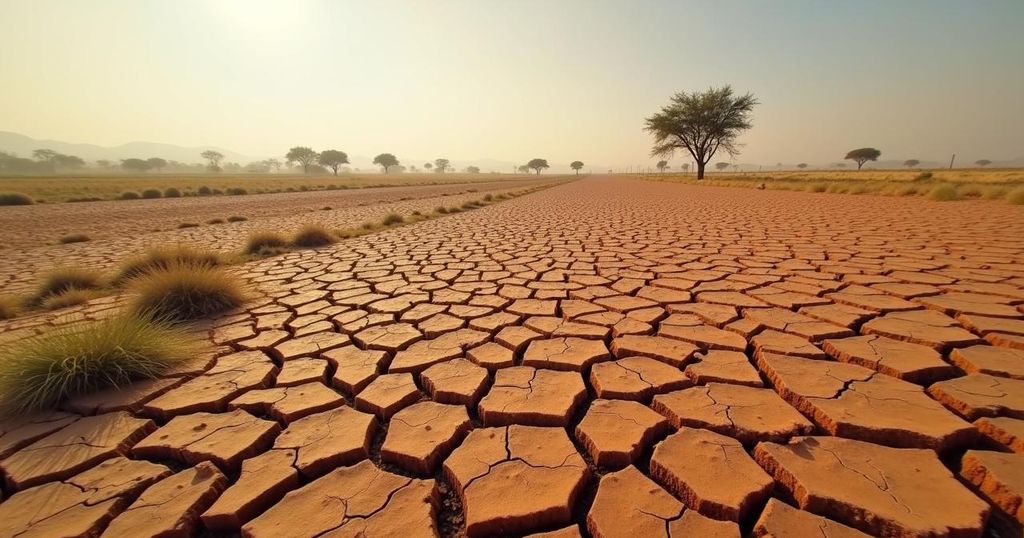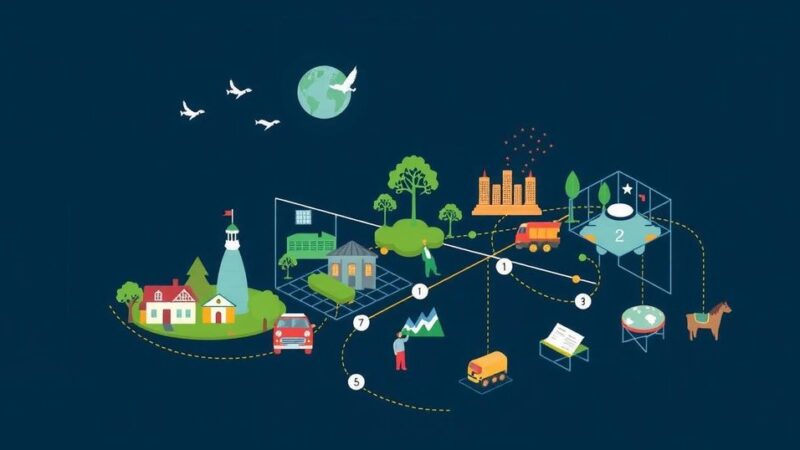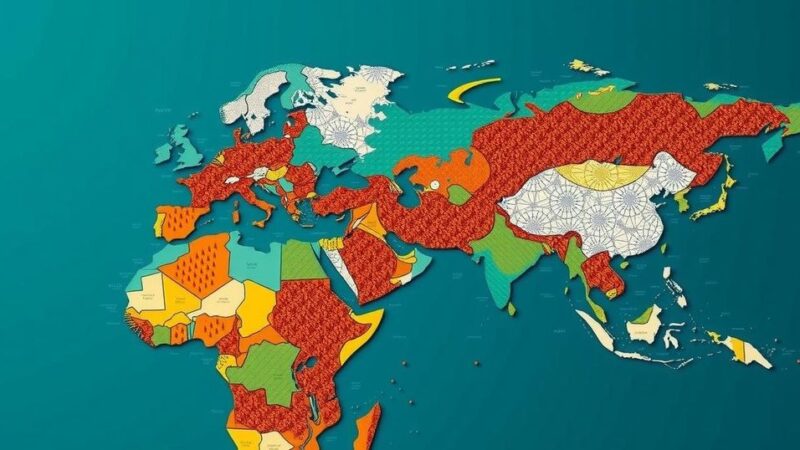Southern Africa is facing its worst drought in a century, impacting over 27 million individuals, notably leading to malnutrition in 21 million children. With states of national disaster declared across several countries, the crisis is likely to worsen until the harvests next March or April. Factors including El Niño and climate change are aggravating the situation, compounding agricultural losses and increasing food insecurity.
The Southern African region is currently grappling with a severe drought, deemed the worst in a century, which has profoundly affected the lives of over 27 million individuals. The unprecedented weather conditions have resulted in significant crop and livestock losses, prompting national disaster declarations in countries such as Lesotho, Malawi, Namibia, Zambia, and Zimbabwe. According to the United Nations’ World Food Programme (WFP), more than 21 million children are facing malnutrition as a direct consequence of this crisis. As October marks the onset of the lean season, conditions are projected to deteriorate monthly until the next harvest period in March or April of the upcoming year. WFP spokesperson Tomson Phiri has stated, “A historic drought – the worst food crisis yet – has devastated more than 27 million lives across the region. Some 21 million children are malnourished.” Experts attribute the drought partly to the El Niño phenomenon, which has resulted in below-average rainfall, compounded by rising global temperatures linked to climate change. In light of these circumstances, significant reductions in agricultural yields have been observed: 70 percent of harvest losses in Zambia and 80 percent in Zimbabwe, according to Lola Castro, the WFP’s acting regional director for southern Africa. This has also had collateral effects on hydropower capacity, leading to widespread electricity shortages and prompting wildlife culls in Namibia and Zimbabwe to provide sustenance for local populations. Damningly, the implications of climate change on sub-Saharan Africa are intensifying, as the region’s economy is heavily reliant on rain-fed agriculture, leaving it vulnerable and under-prepared for the escalating adverse weather conditions. Furthermore, the situation highlights a troubling paradox: the most affected communities often lack the financial resources necessary to implement climate-resilient measures, exacerbating food insecurity and threatening millions of livelihoods more deeply entrenched in dependability on fluctuating climatic conditions.
The drought currently affecting Southern Africa stands as a stark reminder of the region’s vulnerability to climate change and weather extremes. This phenomenon is exacerbated by the El Niño weather cycle, which disrupts normal rainfall patterns and adversely affects agricultural productivity— a pillar of sustenance for millions in the affected countries. As rainfall becomes more unpredictable and temperatures rise, the agricultural sector faces immense challenges resulting in diminishing food security and escalating malnutrition rates among vulnerable populations, particularly children. The socio-economic ramifications are compounded by ineffective adaptation strategies in economically disadvantaged nations that depend heavily on rain-fed agriculture.
In conclusion, the ongoing drought in Southern Africa necessitates urgent humanitarian attention as it threatens millions of lives, particularly among children. The multifaceted crisis, characterized by failed crops, livestock losses, and worsening food shortages, underscores the critical need for immediate intervention to mitigate the impending disaster. Moreover, the climate resilience of the region must be strengthened to combat future challenges associated with climate variability. Authorities and international organizations must work collaboratively to address both immediate food security needs and long-term climate adaptation strategies.
Original Source: www.aljazeera.com






